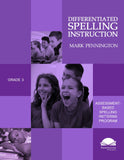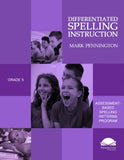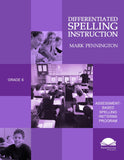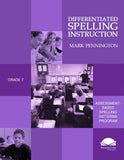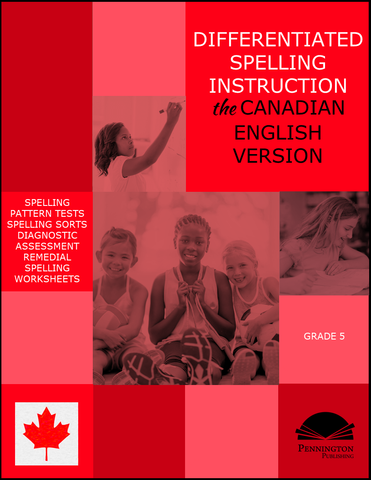
Differentiated Spelling Instruction (Canadian English) Grade 5 Lessons, Remedial Worksheets, and Tests
Differentiated Spelling Instruction (the Canadian English Version) Grade 5 provides teachers with comprehensive printable and digital program resources to teach both grade-level spelling patterns and previous grade-level spelling patterns which students have not yet mastered. With this program, Canadian teachers can truly differentiate instruction for all students with maximum instruction and practice, using minimal class time.
All program components are digital downloads (no print books).
Click to Preview The Entire Program
This program focuses on instructional spelling patterns. Most are consistent between Canadian and American English, but where they differ, students will learn the Canadian spellings with notations that American English differs. Canadians often muse about their spelling inconsistencies; however, the vast majority of Canadian spelling patterns are quite regular and dependable.
Differentiated Spelling Instruction features 30 weekly grade-level word lists based upon instructional spelling patterns. Each spelling pattern has a corresponding spelling sort. Formative assessments (unit tests) with progress monitoring matrices help teachers monitor individual and class mastery of the program spelling patterns.
To address the needs of diverse learners, the program provides the comprehensive Diagnostic Spelling Assessment with recording matrix to help teachers individualize spelling instruction (includes printables, Google Forms, and Google Sheets). The corresponding 99 remedial spelling pattern worksheets each include a spelling sort, a word jumble, rhyme, and/or book search, and a short formative assessment to determine whether or not the student has mastered the spelling pattern.
The appendix also includes these spelling resources: sound wall printables, supplementary word lists, spelling review games, proofreading activities, spelling rules, and memorable spelling songs.
Now that's effective differentiated instruction! Your students can catch up, while they keep up with grade level spelling instruction.
We Also Recommend

